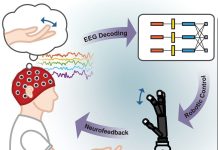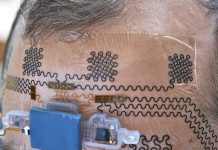
Researchers at the University of Birmingham have developed a groundbreaking diagnostic device for detecting traumatic brain injury (TBI) using a safe laser shone into the eye.
Detailed in Science Advances, this technology marks a significant departure from traditional diagnostic methods and is poised to revolutionize TBI diagnosis in emergency settings.
The ‘Golden Hour’ in TBI Diagnosis
TBI, often resulting from sudden head impacts, requires immediate diagnosis to prevent irreversible damage. The novel device is designed to be used within the critical ‘golden hour’ after injury, a period crucial for making life-saving treatment decisions.
The device combines a class 1, CE-marked, eye-safe laser with a unique Raman spectroscopy system. This system reveals molecular biochemical and structural properties by detecting light scattering, allowing it to identify known biomarkers indicative of brain injury.
Urgency for Improved TBI Diagnosis
Current diagnostic procedures, heavily reliant on ambulance crew observation and hospital-based radiological investigations like X-rays or MRI, face challenges in timeliness and accessibility.
This new technology addresses these limitations by enabling on-site, fast, and precise assessments.
Led by Professor Pola Goldberg Oppenheimer from the School of Chemical Engineering, the team developed a hand-held, non-invasive device causing no additional discomfort to patients.
It can provide immediate information on trauma severity and is suitable for use in diverse settings, including roadside incidents, battlefields, or sports fields.
How It Works
The device scans the back of the eye where the optic nerve resides. Since the optic nerve closely relates to the brain, it carries crucial biomarker information.
TBI alters the balance of these biomarkers, which the device can detect and analyze to create molecular fingerprints indicative of brain injury.
The current study presents the development and optimization of a proof-of-concept prototype, capable of differentiating between TBI and non-TBI states using animal tissue. The device also integrates AI-driven decision support tools for rapid TBI classification.
Ready for further evaluations including clinical feasibility, efficacy studies, and patient acceptability, the device is on track to become a portable technology.
It holds the potential for rapid, on-site determination of TBI severity, significantly aiding in appropriate and timely triage.
Conclusion: A Step Forward in TBI Management
This innovative diagnostic device from the University of Birmingham represents a significant step forward in managing TBI.
Its ability to provide quick and accurate assessments at the point of care could greatly enhance the outcomes for individuals suffering from traumatic brain injuries, streamlining emergency medical responses and improving survival rates.
For more information about blood pressure, please see recent studies about How to eat your way to healthy blood pressure and results showing that Modified traditional Chinese cuisine can lower blood pressure.
For more information about blood pressure, please see recent studies about Prebiotic fiber could manage high blood pressure and results showing that Dietary fiber: A new approach to lowering high blood pressure.
The research findings can be found in Science Advances.
Copyright © 2023 Knowridge Science Report. All rights reserved.



